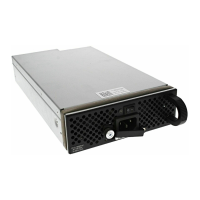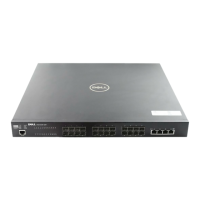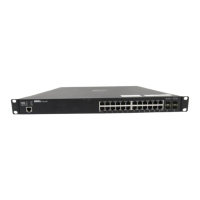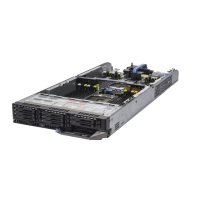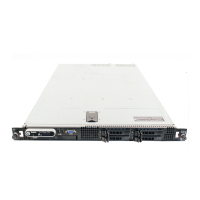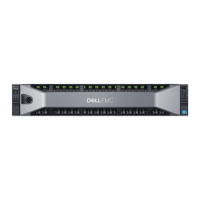102 | Bare Metal Provisioning (BMP)
www.dell.com | support.dell.com
Use reload mode to boot up, the system remains in the system memory. If the system undergoes an
automatic reload, it reloads using the previously used mode. To use a different mode when the system
reloads automatically, reboot the system in a new mode. The new mode is then retained in system memory.
To view the current reload mode, use the
show reload type or show bootvar command (Figure 6-1) and
(Figure 6-2).
Figure 6-1. Command Example: show reload type (normal)
Figure 6-2. Command Example: show reload type (jumpstart)
FTOS#show reload-type
Reload-Type : normal-reload [Next boot : normal-reload]
FTOS#show bootvar
PRIMARY IMAGE FILE = tftp://10.11.9.3/WJ_m1000e-2-c2
SECONDARY IMAGE FILE = variable does not exist
DEFAULT IMAGE FILE = variable does not exist
LOCAL CONFIG FILE = variable does not exist
PRIMARY HOST CONFIG FILE = variable does not exist
SECONDARY HOST CONFIG FILE = variable does not exist
PRIMARY NETWORK CONFIG FILE = variable does not exist
SECONDARY NETWORK CONFIG FILE = variable does not exist
CURRENT IMAGE FILE = tftp://10.11.9.3/WJ_m1000e-2-c2
CURRENT CONFIG FILE 1 = flash://startup-config
CURRENT CONFIG FILE 2 = variable does not exist
CONFIG LOAD PREFERENCE = local first
BOOT INTERFACE GATEWAY IP ADDRESS = 10.11.9.254
Reload Mode = normal-reload
FTOS#show reload-type
Reload-Type : jump-start [Next boot :jump-start]
auto-save : disable
config-download : enable
dhcp-timeout : 50
retry-count : 1
FTOS#
FTOS#show boot jumpstart
Config download enabled via DHCP/BOOTP
Autoconfig State : Autoconfig process has started
Autoconfig State : Waiting for boot options
FTOS#
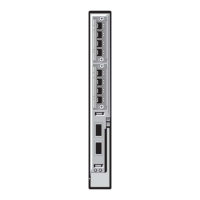
